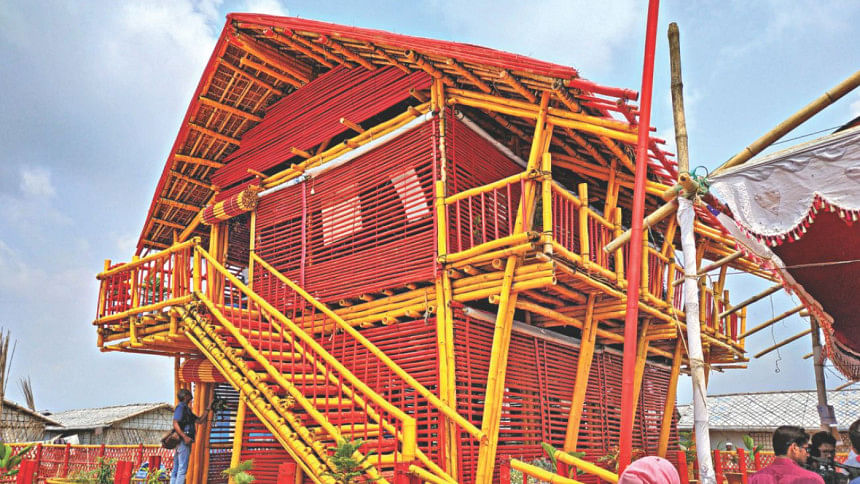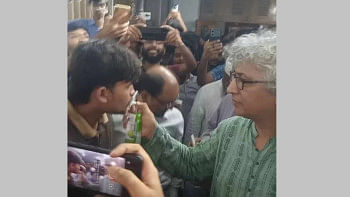A happy place at Kutupalong Rohingya camp

Since the Rohingya influx, around 70 percent of school-age children and youth are yet to have access to any educational facility. There is also a scarcity of space in the camps.
To meet this challenge, Brac and UNHCR (the UN refugee agency), with support from Refugee Relief and Repatriation Commission of the government, inaugurated the first two-storey environment-friendly learning centre at Kutupalong Rohingya camp in Cox's Bazar yesterday.
The school was built to create more learning space and educational opportunities for refugee children.
The school building -- made of bamboo -- is painted bright red and yellow, and can accommodate 240 children. This is the first two-storey learning centre at the refugee camps.
The pilot project brings the number of temporary learning centres that UNHCR has established with Brac in 20 different locations in Camp 4 and 17 since May this year to 39.
At this learning centre, children will initially be taught the basics, and later they will be promoted to first, second, or third grade -- depending on their learning aptitude. The school will operate in three shifts (from 9am to 2pm), six days a week. The children are being taught in Burmese and English.
Two associate professors of Brac University's architecture department designed the school building, which was built with locally-available material and technology.
A slanted thatched roof and perforation in the front and back walls allow smooth flow of wind through the structure and weaken its pressure.

According to Brac, there are presently 317 learning centres providing classes in different Rohingya camps, partnered with Unicef, where 31,834 children are enrolled. The organisation has plans to reach 1 lakh children by 2019.
Dr Safiqul Islam of the Brac Education Program said, “The two-storey design of this learning centre will address the space crisis in this camp. This culturally-sensitive design allows for a better learning environment.”
“It is also built with eco-friendly material and can be modified or relocated if necessary,” he said.
UNHCR Education Officer James Yango said, “This is a creative and innovative way to tackle one major problem we face in the camp -- inadequate space for educational opportunities targeted towards refugee children.”
Refugee Relief and Repatriation Commissioner Mohammad Abul Kalam, said, “We have plans to build more schools, with a focus on sustainability and quality.”
Addressing the Rohingya refugees present at the opening programme, Abul Kalam said, “We are making a serious effort to send you peacefully to your homeland.”
Nesar Ahmed, joint secretary of the Ministry of Primary and Mass Education said, “Teachers from government schools in Cox's Bazar will lend their support to learning centres providing education to the Rohingya children. We will ensure that no children are left without proper education -- regardless of their nationality or birthplace.”
Across all the refugee settlements in Cox's Bazar, there are 540,000 children of school-going age, but only 160,552 can be accommodated at the learning centres, according to Brac.

 For all latest news, follow The Daily Star's Google News channel.
For all latest news, follow The Daily Star's Google News channel. 



Comments